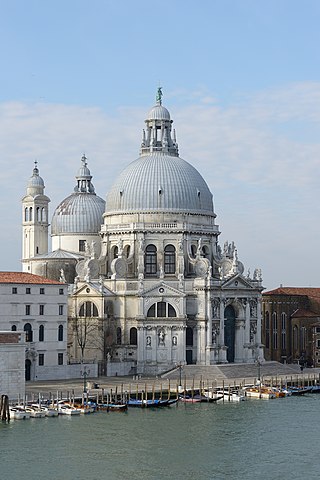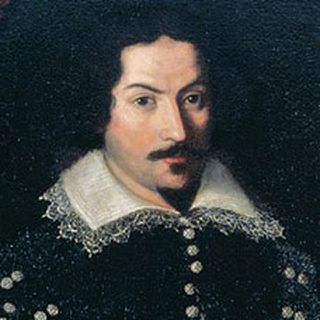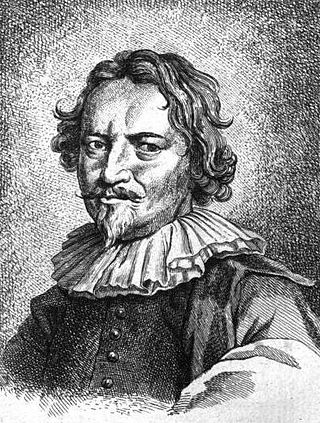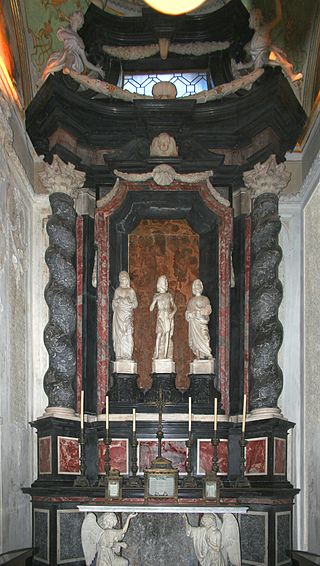
Benedetto Innocenzo Alfieri (8 June 1699 - 9 December 1767) was an Italian architect, a representative of the late-Baroque or Rococo style.

Benedetto Innocenzo Alfieri (8 June 1699 - 9 December 1767) was an Italian architect, a representative of the late-Baroque or Rococo style.
Born in Rome, he was the godson of Pope Innocent XII, and a member of the notable Alfieri family of Piedmontese origin (the well-known dramatist Vittorio Alfieri was his nephew). [1] In Rome, Benedetto was educated in mathematics and design by the Jesuits; he then moved to Piedmont (living in Turin and Asti) to practice both as a lawyer and as an architect. [2] He was frequently patronized by Charles Emmanuel III of Sardinia, who commissioned him with the design of the Royal Theater of Turin; [2] the theatre (which was probably his masterwork) burned down in 1936 and reopened in 1973.
He also completed the bell tower of the Church of Santa Anna in Asti; designed the Palazzo Ghilini in Alessandria; helped complete the façade of the Vercelli Cathedral (1757–1763); aided in the decoration of the interior of the Basilica of Corpus Domini in Turin and the decoration of Palazzo Chiablese, adjacent to the Royal Palace in Turin. [1] He also contributed additions and extensive decoration of the Palazzina di caccia of Stupinigi. He designed the bell tower of the Basilica of San Gaudenzio in Novara. He also completed the neoclassical façade of Saint Pierre Cathedral in Geneva. [2] The King made him Count of Sostegno.
He collaborated during his long career with artists such as Luigi Acquisti, Giovanni Battista Borra, and Emilio Usiglio among many. He died in Turin.

Galeazzo Alessi was an Italian architect from Perugia, known throughout Europe for his distinctive style based on his enthusiasm for ancient architecture. He studied drawing for civil and military architecture under the direction of Giovanni Battista Caporali.

Arnolfo di Cambio was an Italian architect and sculptor of the Duecento, who began as a lead assistant to Nicola Pisano. He is documented as being capomaestro or Head of Works for Florence Cathedral in 1300, and designed the sixth city wall around Florence (1284–1333).

Andrea Palladio was an Italian Renaissance architect active in the Venetian Republic. Palladio, influenced by Roman and Greek architecture, primarily Vitruvius, is widely considered to be one of the most influential individuals in the history of architecture. While he designed churches and palaces, he was best known for country houses and villas. His teachings, summarized in the architectural treatise, The Four Books of Architecture, gained him wide recognition.

The Grand Canal is a channel in Venice, Italy. It forms one of the major water-traffic corridors in the city.

Filippo Juvarra was an Italian architect, scenographer, engraver and goldsmith. He was active in a late-Baroque architecture style, working primarily in Italy, Spain, and Portugal.

Baldassare Longhena was an Italian architect, who worked mainly in Venice, where he was one of the greatest exponents of Baroque architecture of the period.

Carlo Maderno (Maderna) was an Italian architect, born in today's Ticino, Switzerland, who is remembered as one of the fathers of Baroque architecture. His façades of Santa Susanna, St. Peter's Basilica and Sant'Andrea della Valle were of key importance in the evolution of the Italian Baroque. He is often referred to as the brother of sculptor Stefano Maderno, but this is not universally agreed upon.

Carlo Fontana (1634/1638–1714) was an Italian architect originating from today's Canton Ticino, who was in part responsible for the classicizing direction taken by Late Baroque Roman architecture.

Giacomo della Porta (1532–1602) was an Italian architect and sculptor, who worked on many important buildings in Rome, including St. Peter's Basilica.

Novara is the capital city of the province of Novara in the Piedmont region in northwest Italy, to the west of Milan. With 101,916 inhabitants, it is the second most populous city in Piedmont after Turin. It is an important crossroads for commercial traffic along the routes from Milan to Turin and from Genoa to Switzerland. Novara lies between the streams Agogna and Terdoppio in northeastern Piedmont, 50 km (31 mi) from Milan and 95 km (59 mi) from Turin. It is only 15 km (9.3 mi) distant from the river Ticino, which marks the border with Lombardy region.

Italy has a very broad and diverse architectural style, which cannot be simply classified by period or region, due to Italy's division into various small states until 1861. This has created a highly diverse and eclectic range in architectural designs. Italy is known for its considerable architectural achievements, such as the construction of aqueducts, temples and similar structures during ancient Rome, the founding of the Renaissance architectural movement in the late-14th to 16th century, and being the homeland of Palladianism, a style of construction which inspired movements such as that of Neoclassical architecture, and influenced the designs which noblemen built their country houses all over the world, notably in the United Kingdom, Australia and the United States of America during the late-17th to early 20th centuries.

Bernardo Antonio Vittone was an Italian architect and writer. He was one of the three most important Baroque architects active in the Piedmont region of Northern Italy; the other two were Filippo Juvarra and Guarino Guarini. The youngest of the three, Vittone was the only one who was born in Piedmont. He achieved a synthesis of the spatial inventiveness of Juvarra and the engineering ingenuity of Guarini, particularly in the design of his churches, the buildings for which he is best known.

Gothic architecture appeared in the prosperous independent city-states of Italy in the 12th century, at the same time as it appeared in Northern Europe. In fact, unlike in other regions of Europe, it did not replace Romanesque architecture, and Italian architects were not very influenced by it. However, each city developed its own particular variations of the style.
Virginio Vespignani was an Italian architect.
Giovanni Battista Borra was an Italian architect, engineer and architectural draughtsman.

Italian Baroque architecture refers to Baroque architecture in Italy.

Giuseppe Zanoia (1752–1817) was an Italian Neoclassical architect who is remembered for his Porta Nuova in Milan. He also collaborated on the Neogothic design of Milan's Duomo.

Grazioso Rusca was a Swiss sculptor who was also active in northern Italy.

Ferdinando Bonsignore was an Italian architect and designer.